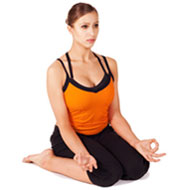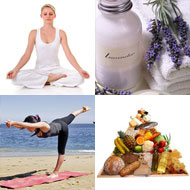- Hypothyroid
- Physical Symptoms of Stress
- Chronic Back Pain Relief
- Bedtime Yoga
- Yoga for Beginners
- Yoga for Kids
- Yoga for Obesity
- Yoga for Stress
- Yoga for Back Pain
- Yoga for Athletes
- Yoga for Fibromyalgia
- Yoga for Golfers
- Yoga for Pregnant Women
- Yoga for Thyroid
- Yoga for Your Life
- Yoga for Eyes
- Yoga for Headaches
- Yoga for Sciatica
- Yoga Poses for Bulging Discs
- Yoga Poses for Flat Abs
- Yoga Poses for Healthy Complexion
- Yoga Poses for Insomnia
- Yoga Postures for Fertlity
- Yoga Belt for Back
- Yoga for Couples
- Yoga for Seniors
- Yoga for Varicose Veins
- Yoga for Women
- Yoga Poses for Singers
- Yoga Positions for Older Women
- Yoga Postures for Abs
- Yoga Postures for Conception
- Yoga for Meditation
- Yoga for Menstrual Cramps
- Yoga for Runners
- Yoga for Relaxation
- Yoga for Men
- Yoga Therapy for Hypertension
- Yoga for Scoliosis
- Yoga for Inflexible People
- Benefits of Yoga for Dancers
- Yoga for Neck Pain
- Breathing Exercises
- Breathing Problems
- Yoga for Constipation
- Yoga for Medical Conditions
- Yoga for Strength
- Yoga for Legs
- Deep Breathing
- Relaxation Breathing
- Yoga for Arthritis
- Yoga for Multiple Sclerosis
- Yoga for Plantar Fasciitis
Yoga for Allergy Symptoms
Allergies aren't just irritating; they can affect sleep, concentration, and productivity and put you in a bad mood. Allergy shots, nasal steroid sprays, and over-the-counter antihistamines may work for many, but a more holistic approach can help as well.
Yoga practice can help reduce allergy symptoms by tempering your immune system's response to the offender. Just modifying your Yoga practice with calming poses can help you breathe easier.
Allergies are worsened by stress reactions that cause physiological responses, including the release of stress hormones and histamine, and triggers inflammation. Relaxation, on the other hand, diminishes fight-or-flight response, thereby reducing allergic symptoms. Through the process of relaxation, the nervous system tells the immune system to hold its fire. Once the immune system has backed off, the inflammation and mucus decrease, and symptoms begin to diminish.
Yoga for allergies
When allergies flare up, avoid anything that could add insult to injury and keep energy up, since allergies are also associated with low energy. Plus we advise against using forceful breathing or any pranayama through the nostrils, as congestion might make this difficult and uncomfortable. While breathing, place a greater emphasis on exhalation; a short inhalation followed by a longer one has a calming effect.
Do mild Kapalabhatti, Anuloma-Viloma, Ujjayi and Brahmari.
Inversions help clear the upper respiratory tract and drain secretions from the nose, allowing freshly oxygenated blood to flow into the oral cavity. Doing Sarvangasana and Halasana help open nasal passages, ensuring proper drainage of sinuses. However, don't keep your head down too long in poses like Adho Mukha Svanasana and Sirshasana. This can put extra pressure on nasal passages."
We also recommend doing more standing poses – forward and backward bends, and twists – in your practice. All of these tend to massage various parts of the spine and the thoracic cage and condition the lungs.



